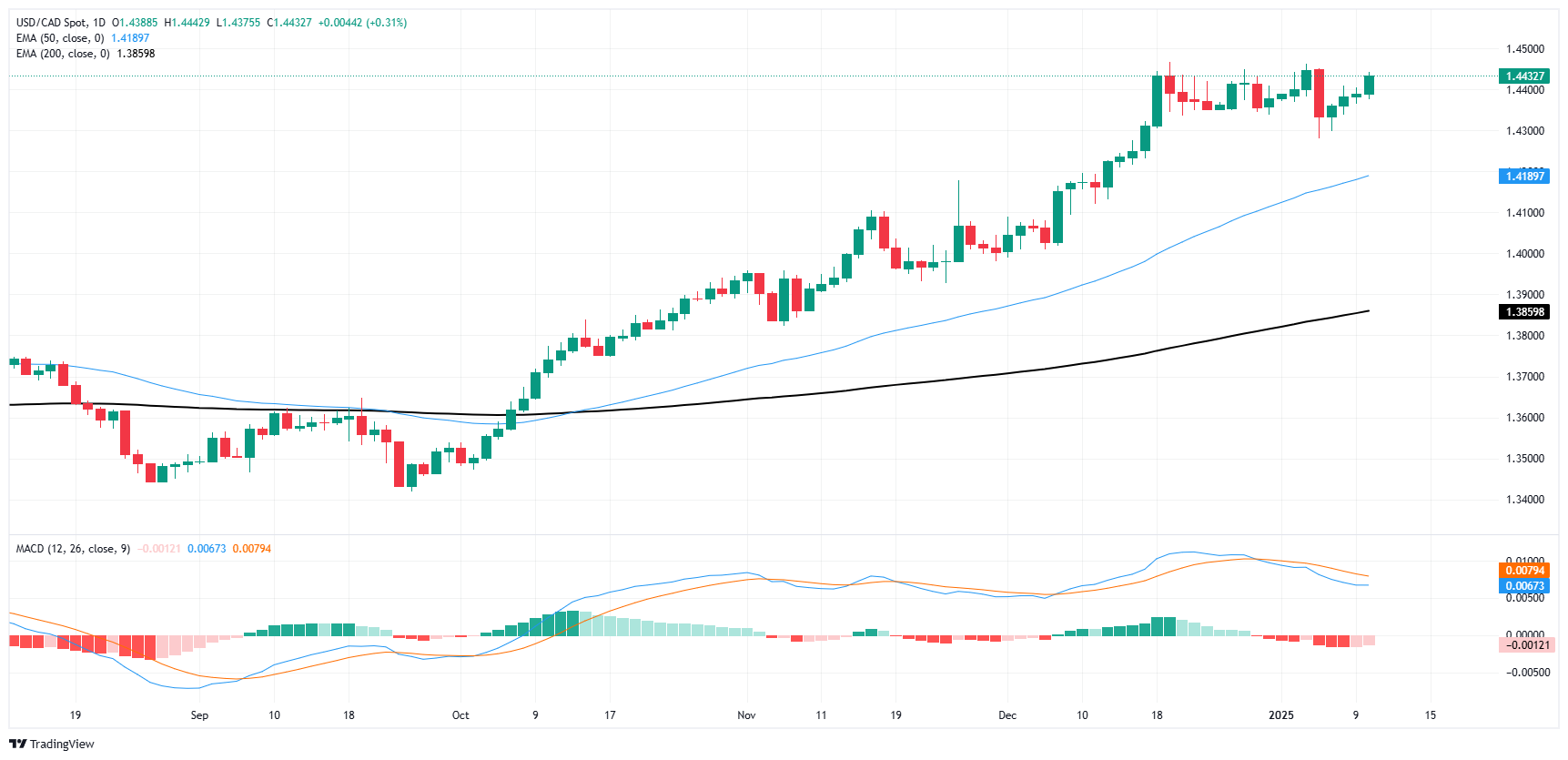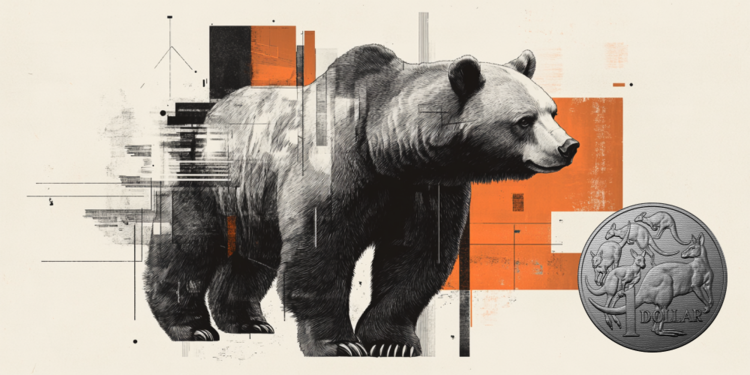- The Canadian Dollar rose on Friday, but still lost ground against the Dollar.
- Canada and the US added more jobs than expected in December.
- The unemployment rate and wage growth in Canada also declined.
The Canadian dollar (CAD) received a bid on Friday, strengthening in the broader currency market after Canadian employment numbers in December far exceeded forecasts. However, a broad rise in risk aversion after US Non-Farm Payrolls (NFP) also beat forecasts, dashed investors’ rate cut expectations in 2025, sending the US dollar up refuge, broadly on the rise.
Canada’s net employment change was 90.9K, a two-year high for monthly employment gains, while US NFP net job additions rose to 256K, also beating expectations. Strong US job growth will make it difficult for the Fed to make further rate cuts, and market bets on Fed rate cuts in 2025 are falling.
Daily Market Summary: CAD rises on job gains, but dollar rises faster
- Canada added nearly one hundred thousand jobs in December, hitting a two-year high in hiring in a single month. Median market forecasts were expecting a sharp drop to 25K for the month, down from November’s figure of 50.5K.
- On the US side, NFP net employment gains rose to 256K, well above the previous 160K, 212K forecast.
- Overall, retrospective revisions to data sets remain a key issue: participation in employment surveys remains low overall, with a response rate typically around 50%, leaving plenty of room for error in reported figures. .
- Average hourly earnings in Canada grew at an annualized rate of 3.7% in December, slightly down from 3.9% in the previous period.
- The unemployment rate in Canada also fell to 6.7% from 6.8%; the market expected an increase to 6.9%.
Canadian Dollar Price Forecast
Despite a firm employment data in Canada, markets continue to pivot towards the safety of the Dollar, pushing the Loonie lower. The USD/CAD chart is hitting the ceiling again as the US Dollar rises to test multi-year highs against the Canadian Dollar.
USD/CAD is back above the 1.4400 level, a key barrier for the Loonie bulls. It is a short trip towards new multi-year highs near the 1.4500 level, a price the pair has not seen since the pandemic era. Despite a drop earlier this week, USD/CAD has pared almost all of its losses and is retesting Monday’s opening bids, leaving room for CAD to fall further and push the pair towards new highs.
USD/CAD daily chart
Canadian Dollar FAQs
The key factors that determine the price of the Canadian Dollar (CAD) are the level of interest rates set by the Bank of Canada (BoC), the price of oil, Canada’s main export product, the health of its economy, inflation and the trade balance, which is the difference between the value of Canadian exports and its imports. Other factors are market confidence, that is, whether investors bet on riskier assets (risk-on) or look for safe assets (risk-off), with the risk-on being positive for the CAD. As its largest trading partner, the health of the US economy is also a key factor influencing the Canadian dollar.
The Bank of Canada (BoC) exerts significant influence over the Canadian Dollar by setting the level of interest rates that banks can lend to each other. This influences the level of interest rates for everyone. The BoC’s main objective is to keep inflation between 1% and 3% by adjusting interest rates up or down. Relatively high interest rates are usually positive for the CAD. The Bank of Canada can also use quantitative easing and tightening to influence credit conditions, with the former being negative for the CAD and the latter being positive for the CAD.
The price of oil is a key factor influencing the value of the Canadian Dollar. Oil is Canada’s largest export, so the price of oil tends to have an immediate impact on the value of the CAD. Generally, if the price of oil rises, the CAD also rises, as aggregate demand for the currency increases. The opposite occurs if the price of oil falls. Higher oil prices also tend to lead to a higher probability of a positive trade balance, which also supports the CAD.
Although inflation has traditionally always been considered a negative factor for a currency, as it reduces the value of money, the opposite has actually happened in modern times, with the relaxation of cross-border capital controls. Higher inflation often leads central banks to raise interest rates, attracting more capital inflows from global investors looking for a lucrative place to store their money. This increases the demand for the local currency, which in the case of Canada is the Canadian Dollar.
The published macroeconomic data measures the health of the economy and may have an impact on the Canadian dollar. Indicators such as GDP, manufacturing and services PMIs, employment and consumer confidence surveys can influence the direction of the CAD. A strong economy is good for the Canadian dollar. Not only does it attract more foreign investment, but it may encourage the Bank of Canada to raise interest rates, resulting in a stronger currency. However, if economic data is weak, the CAD is likely to fall.
Source: Fx Street
I am Joshua Winder, a senior-level journalist and editor at World Stock Market. I specialize in covering news related to the stock market and economic trends. With more than 8 years of experience in this field, I have become an expert in financial reporting.







